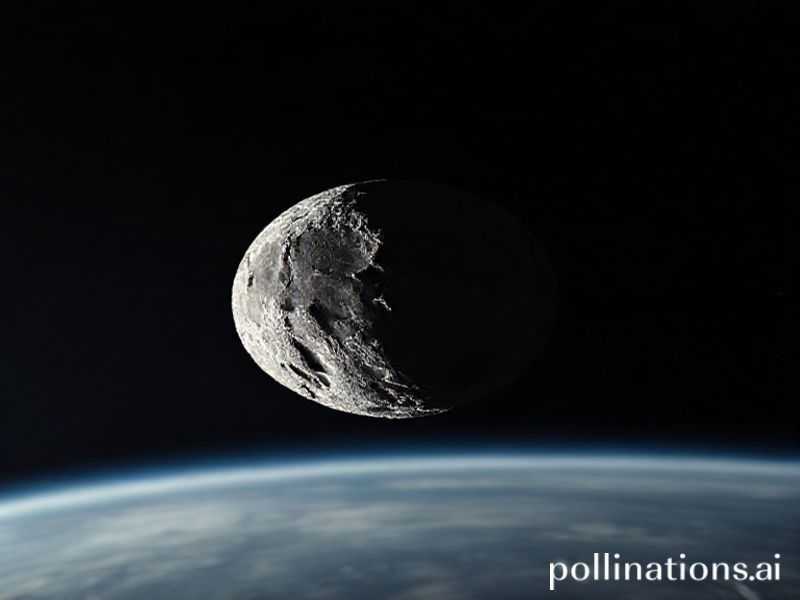Quasi Moon Craze: Why Earth’s Cosmic Sidekick Has the Internet Starstruck
**The Quasi Moon Craze: Why the Internet Can’t Get Enough of Earth’s Sidekick**
Alright, folks, buckle up! We’re diving headfirst into the celestial sensation that’s been setting the internet ablaze—quasi moons. Yes, you heard it right. These aren’t your average, run-of-the-mill moons. They’re the cool, mysterious, and slightly rebellious cousins of our beloved lunar companion. But why, you ask, is the world suddenly obsessed with these cosmic sidekicks? Let’s break it down.
**What’s a Quasi Moon, Anyway?**
First things first, let’s get our astronomical terms straight. A quasi moon, or a “quasi-satellite,” is an object that orbits the sun in a way that makes it appear as if it’s orbiting Earth. It’s like that friend who always seems to be tagging along but technically has their own life. The most famous quasi moon is 3753 Cruithne, a 5-kilometer-wide asteroid that’s been Earth’s cosmic plus-one since at least 1900.
**Why the Sudden Frenzy?**
So, why is everyone from astrophysicists to meme lords suddenly losing their minds over quasi moons? Well, for starters, NASA’s recent announcement about a new quasi moon named Kamoʻoalewa has sent the internet into a tizzy. This tiny asteroid, discovered in 2016, has been confirmed to be a quasi-satellite of Earth, and it’s got everyone from scientists to stargazers buzzing.
But it’s not just the discovery that’s got people talking. It’s the sheer weirdness of it all. Quasi moons are like the cosmic equivalent of that one friend who’s always around but never quite fits in. They’re not true moons, but they’re not quite asteroids either. They’re the celestial equivalent of a “it’s complicated” relationship status.
**Cultural Context: The Internet’s Love Affair with Space**
Let’s be real—humans have always been obsessed with space. From the first moon landing to the latest Mars rover, we can’t get enough of our cosmic neighborhood. And in the age of social media, that obsession has reached new heights (pun intended).
The internet has turned space into a cultural phenomenon. Memes about black holes, TikToks about the James Webb Space Telescope, and Twitter threads about the mysteries of the universe are all part of our digital diet. Quasi moons are just the latest addition to this celestial smorgasbord.
**Social Impact: Inspiring the Next Generation of Stargazers**
But it’s not all just fun and games. The quasi moon craze has a serious side too. It’s inspiring a new generation of stargazers, scientists, and dreamers. Kids who might not have been interested in astronomy are suddenly asking questions about quasi moons, and that’s a beautiful thing.
It’s also sparking conversations about space exploration and the future of humanity. If we can understand and potentially harness the power of quasi moons, who knows what other cosmic wonders await us?
**Why It’s Significant**
So, why does any of this matter? Well, for one, quasi moons could hold the key to understanding the early solar system. They’re like cosmic time capsules, preserving information about the conditions that existed when the planets were forming.
But perhaps more importantly, quasi moons are a reminder of just how much we still don’t know about the universe. They’re a humbling testament to the mysteries that still lie out there, waiting to be discovered.
**Conclusion: The Quasi Moon Craze is Just Getting Started**
The quasi moon craze is more than just a passing fad. It’s a reflection of our collective fascination with the cosmos and our insatiable curiosity about the unknown. And as we continue to explore and discover, one thing is clear: the quasi moon craze is just getting started.
So, buckle up, folks. The universe is calling, and it’s got a lot more surprises in store for us. And who knows? Maybe one day, we’ll look back on the quasi moon craze as the moment when humanity took its first steps towards becoming a truly interplanetary species.
Until then, keep looking up. The cosmos is waiting.







